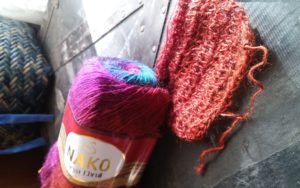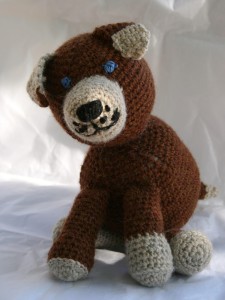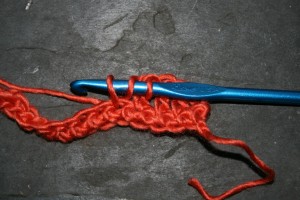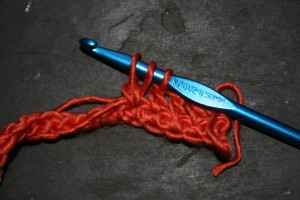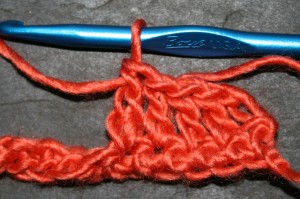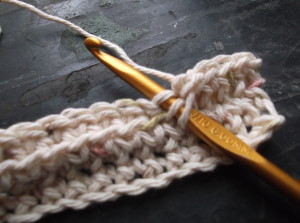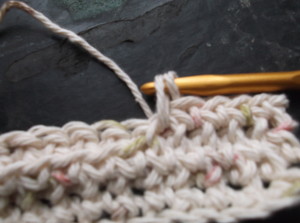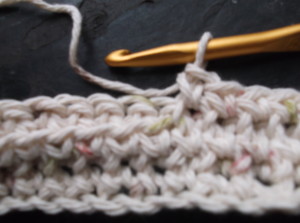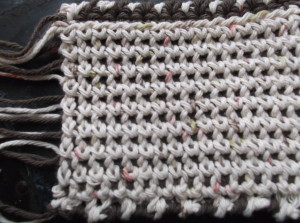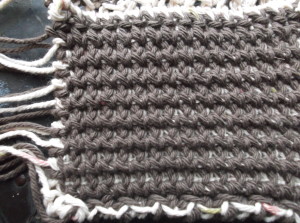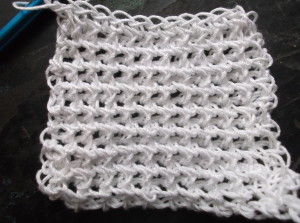 Yarns with only a single twist can create a unique stitch that is well defined and full, but there can be some draw backs. I experienced these with a new yarn, Nako Arya Ebruil.
Yarns with only a single twist can create a unique stitch that is well defined and full, but there can be some draw backs. I experienced these with a new yarn, Nako Arya Ebruil.
The yarn has beautiful colorways, with long gradient color, so long that it maybe that only the beginning and end use of the skein will share the same tones. It is lovely lace to superfine weight yarn comprised of 80% Acrylic, 10% wool, and 10% Alpaca, so it is not only durable, but has a little extra warmth. The feel is quite soft, and the single strand has a nice twist.
So what is a single strand? Well yarn is usually made up of multiple strands of twisted fiber that are plied together, meaning they twisted together in the opposite direction than they were originally created, it is this tension that creates a study yarn. A single simply means that it is only one, being the initial twist of the fiber, there is no plying with others to create a tension. This does cause some definite positives as it creates a nicely defined stitch, and can easily highlight various stitch work, but there is a drawback, it tends to pill, and is not a yarn that you want to rip back often as it usually snags on itself. This is due to the fact that the individual fibers are not as securely “locked” into the yarn structure and can break free of the twist. All of these characteristics are present in this yarn.
That being said, it still has a nice drape and feel that encourage me to put it to use. I can see where this yarn would lend itself very nicely to a wrap of shawl, possibly even a garment (I would suggest sleeveless, to avoid underarm pilling).

